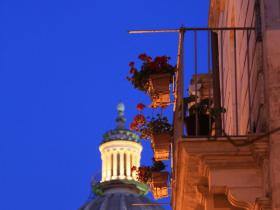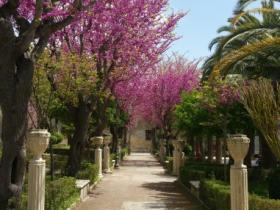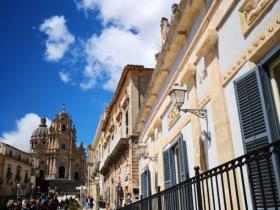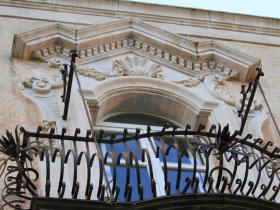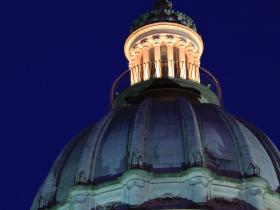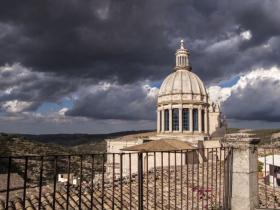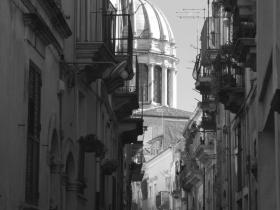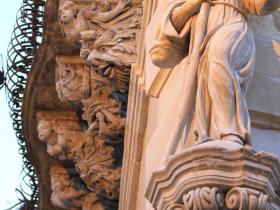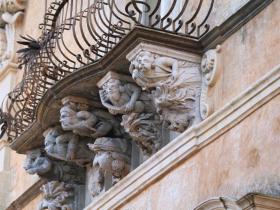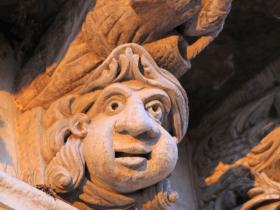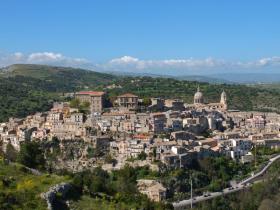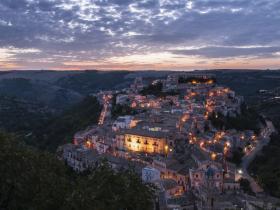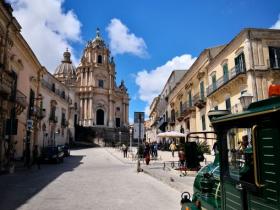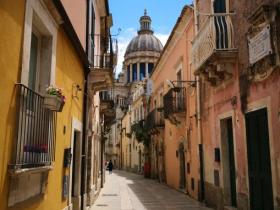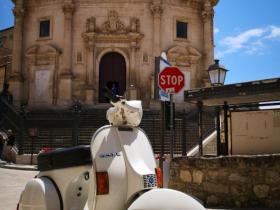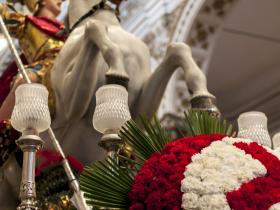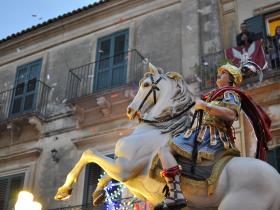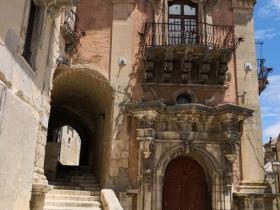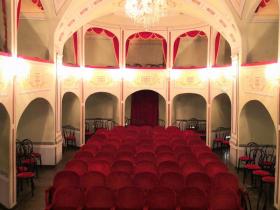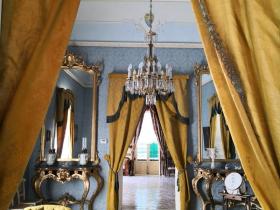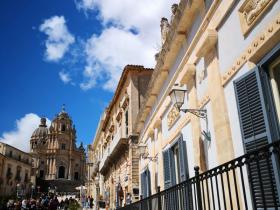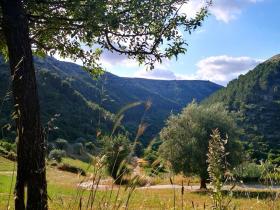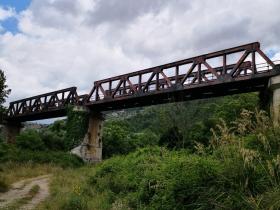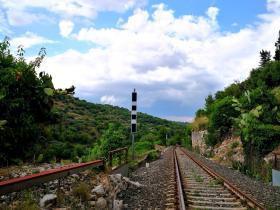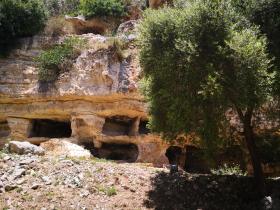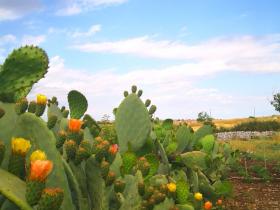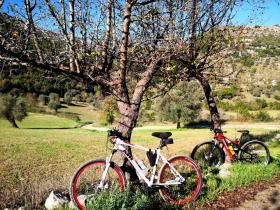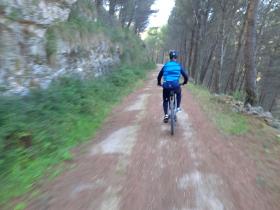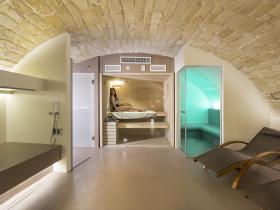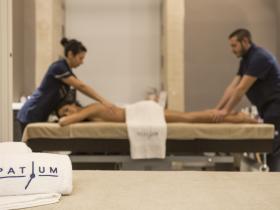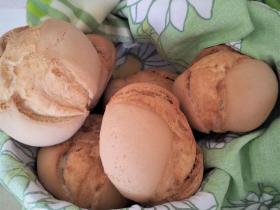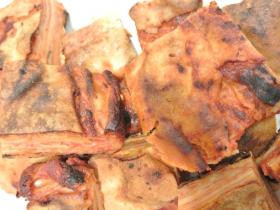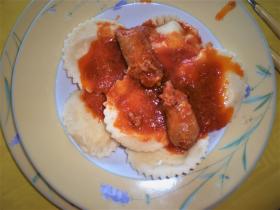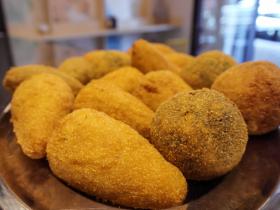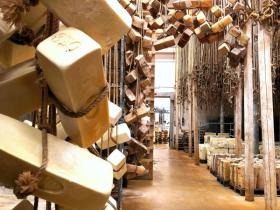B&B Terrazza dei Sogni - Ragusa Ibla
Ragusa Ibla
Visit Ragusa Ibla
Ragusa occupies the south east part of Sicily and it is the southest province of Italy. Ragusa is also part of the Val di Noto.
The city is immersed in the green of nature on what is called the "Ragusano Plateau" due to the irregular formation of the ground, disconnected from deep canyons.
Typical Restaurants "GOURMET"
Michelin Stars
Street Food
Ice Cream Shops - Pastry
Bars - Pubs
The city is immersed in the green of nature on what is called the "Ragusano Plateau" due to the irregular formation of the ground, disconnected from deep canyons.
Ragusa Ibla is the historical centre of Ragusa which occupies the south east part of Sicily and it is the southest province of Italy. Ragusa is also part of the Val di Noto.
The city is immersed in the green of nature on what is called the "Ragusano Plateau" due to the irregular formation of the ground, disconnected from deep canyons.
The city is immersed in the green of nature on what is called the "Ragusano Plateau" due to the irregular formation of the ground, disconnected from deep canyons.
WHAT RAGUSA IBLA MEANS
The name of Ragusa Ibla is a true puzzle that has been going on for decades as several souces still exist today but none of them can prove certainly that is the correct one.
Ibla is the ancient name of some prehistoric sites in eastern Sicily which probably belonged to the "Siculi" who had a king called Iblone. The surrounding mountains also take the name of "Monti Iblei".
In the 16th century, a German geographer, Filippo Cluverio (this source is also not sure due to a dubious translation of the texts) identified an Ibla called Ibla Menor, placing it at the archeological site of Ragusa. Consequently, in the 20th century, the city dedicated his historic centre to it and took the actual name of Ragusa Ibla.
Ibla is the ancient name of some prehistoric sites in eastern Sicily which probably belonged to the "Siculi" who had a king called Iblone. The surrounding mountains also take the name of "Monti Iblei".
In the 16th century, a German geographer, Filippo Cluverio (this source is also not sure due to a dubious translation of the texts) identified an Ibla called Ibla Menor, placing it at the archeological site of Ragusa. Consequently, in the 20th century, the city dedicated his historic centre to it and took the actual name of Ragusa Ibla.
HISTORY OF RAGUSA
Ragusa’s province occupy just a small part of Sicily, which is the biggest island of the Mediterranean sea. Plenty of legends, history and ancient civilizations, Ragusa, is defined by artists, economists and literatus “the island in the island” due to his different economy structure. However, the origins of Ragusa are connected to the whole island, for mythologies and legends, that have left indelible signs in the architecture and culture of the territory.
-First establishments are in the 20th century b.c. by “the Sicani” and in a larger scale “ the Siculi”. From these ancient habitants there are significant marks, like the necropolis around Ragusa. A group of tombs, dug in the rock, are seen under Santa Maria delle Scale church; while others can be seen from the Giardino Ibleo.
-Real first colonizers are the Greek in the 8th century b.c.. Although they started trading with the Siculi of Hybla, they respected their autonomy, giving them the nickname of “Audax” (audacious) that have been able to maintain his independency until the half of the 3rd century b.c.
-Under the Roman domination, Ragusa and Modica did not have a flourishing period because they were obliged to pay one tenth of the harvest to Rome.
- Afterwards: Byzantines, Arabs, Normans, Swabians and Angevins left some trails in this extraordinary land. Arabs in less than 200 years gave a magnificent help to the Sicilian agriculture, bringing new cultivation techniques. But, Angevins, have not been welcomed and actually they have been banished with the famous “Sicilian Vespers”.
- Ragusa, together with Modica, turn to be a unique Shire in 1296 thanks to the marriage between Manfredi I Chiaramonte and Isabella Mosca daughter of Modica’s Earl. With Manfredi III Chiaramonte, the Shire reaches the maximum splendor, delighting of an independent administration from the central govern of Palermo, Nobody had the straight to command, but only the Earl. The Shire of Modica, becomes one the most important feudal State, specially under the command of Bernardo Cabrera.
Ragusa, after the catastrophic earthquake of 1693, that damaged all Val di Noto killing 60.000 people, where of 5.000 in Ragusa, (9.000 habitant at that time) has been reconstructed.
Part of the population, more conservative and tied to their traditions, leaded by nobles, decided to reconstruct the city on the ancient site, which is Ibla. On the other hand, bourgeois and entrepreneurs, built the city in a new location, upper Ragusa.
Immediately, baroque churches and palaces started to born with their protuberant and decorated balconies, sculpted by local masters with the intend to impress people passing by.
All the masterpieces of Val di Noto, rebuilt after the earthquake, have been declared in 2002 patrimony of the humanity of UNESCO and Ragusa represent one of the most important city for the baroque art.
How long to stay in Ragusa Ibla it really depends on how deep you want to visit the city and the surrounding area. Ragusa is a fashinating place where time goes slow and we think that is the right mood how should be visited.
Thanks to his central location it is a great hub to explore also the near towns of the Val di Noto. In fact, in only 20 to 40 minutes by car is possible to reach Modica, Scicli, Ispica, the castle of Donnafugata, Noto, Syracuse as well as the best beaches areas as Marzamemi, Punta Secca, Sampieri, Marina di Ragusa and more.
In ordet to enjoy the beauty of the city it is a must to visit the two city centres walking through the amazing staircases with unique views.
In add, every day from Ragusa Ibla you have the opportunity to experience cooking classes or any kind of tour about in the city of the nature and why not to take a break in the SPA.
Following a list of tips which may help you to decide how many days to stay in Ragusa Ibla.
Duomo San Giorgio (Piazza Duomo)
Piazza Duomo, is dominated by one of the most suggestive scenery of the Sicilian baroque: The Duomo San Giorgio stands above the square thanks to the staircase that makes it taller. Built after the terrible earthquake of 1693 (between 1739 and 1775) on the ruins of the old San Nicola’s church, by the architect from the near Noto, Rosario Gagliardi. The structure present a picturesque façade characterized from two groups of three columns, adorned with statues and baroque decorations.
At the back of the façade, is impossible not to admire the extraordinary Dame (43m tall), inspired by the Pantheon of Paris, supported by 16 neoclassic columns. Built only in the 1820.
The inside, composed with three naves, is divided by pillars with corinthian capitals, illuminated from huge windows, in which are represented the thirteen episodes of the Saint’ torture.
Piazza Pola (Corso 25 Aprile)
going up for Corso 25 Aprile, we arrive at Piazza Pola where there is San Giuseppe’s church, built in 1756 for want of nuns “benedettine”, in a splendid baroque style. The façade remind San Giorgio, surely the project is made by school of Gagliardi.
Giardino Ibleo (entrance from Piazza Giambattista Odierna)
is a mix of Italian and English style. Inside of it there are three different churches:
San Domenico, erected in 1569 and rebuild after the earthquake of the 1693, today needs to be renovated.
San Giacomo, with three naves in the past, today present just a unique nave, rebuilt in a baroque style, after the tragic seism. Inside, the woody ceiling is from the 18th century and, on the presbytery, a Crucifix of the 17th century by Spanish school.
Chiesa dei Cappuccini, reconstructed after the earthquake of 1693, inside preserve a triptyque of Pietro Novelli with “Assunta, Sant’ Agata and Sant’ Agnese”. The last one is recognized, as the most important painting of the province.
If you have a walk inside the Giardino Ibleo is possible to admire the spectacular hills that surround this place.
Portale San Giorgio (Via del Portale)
located beside the main gate of giardino ibleo, there is a unique survivor from the earthquake of the 1693, that damaged all Val di Noto: the antique “Portale” San Giorgio from the original church of San Giorgio. This church described as a place of reverence, proudly showed one of the tallest bell tower of Europe (100m). Most probably, the Gate was the left access of the church. Luckily today, is still possible to admire the splendid acute arch in a perfect gotic-catalan style, decorated with the Saint riding a horse killing a dragon. On the top of the arch, by the side, is possible to see the symbol of Ragusa: the eagle.
Chiesa Santa Maria dell’Idria (Via Scale)
going up through “scalinata commendatore” there is Santa Maria dell’Idra’s church built between the 15th and 16th century. Firstly, this church had been dedicated to San Giuliano and was rebuilt twice: before and after the catastrophic earthquake. The most beautiful part of the church, most probably, is the octagonal dame, enriched of decorated majolica with typical Sicilian colors.
Chiesa Santissime anime del Purgatorio (Piazza della Repubblica)
this Church might remind the Duomo San Giorgio, perhaps for his large staircase that makes it taller. The bell tower, is slightly separated from the church and his foundation grows on the ancient byzantine walls.
Inside are preserved some remarkable paintings: Anime Purganti by Francesco Manno, La Madonna del Rosario by Antonino Manno, La Sacra Famiglia by Tommaso Pollaci.
Around Ragusa Ibla
Lots are the narrow streets and paths that cross this wonderful and characteristic town. Walk through those, it looks like to get back in the past when the baroque style commanded. Therefore, many building are worth to visit:
Circolo di Conversazione (Piazza Duomo)
built in 1850 by the local aristocracy, in a neo-classic style, this building had the purpose to gather wealthy people to converse undisturbed from the “common” habitants.
Palazzo Cosentini (Salita Commendatore)
was built at the end of the 1700 for will of Raffaele Cosentini, baron of that time. Spectacular balconies stand out in this building, characterized by astonishing masks with the intent to astound people passing by, as the tradition of the time wanted.
Palazzo Sortino-Trono (entrance from via del mercato)
was built up for the initiative of Don Ignazio Sortino-Trono, in 1778, on the foundation of any family’s houses and, probably, on the walls of the old castle. The huge façade dominate “piazza degli archi”. Accessible only through a steep path, starting from Via del Mercato.
Palazzo Cancelleria (Via Scale)
the current construction was built in 1760 for will of Nicastro’s family. Last century the noble residence was changed in chancellor’s office. Afterword into a school. Despite the inside is not well preserved the façade is still intact.
Palazzo La Rocca (Via Capitano Bocchieri)
this old construction is erected since Normans occupied Ragusa. However, in 1765, was rebuilt by La Rocca’s family, baron of S. Ippolito. Nowadays is still possible to see some of the rests of the antique wall. This palace has a characteristic ogival arch, located in the basement.
The prospect is count seven balconies supported by three big “mensoloni” made of typical “pietra pece ragusana”. There are also spectacular representation like: the flutist, the lute player and a mother holding a baby.
Chiesa Santa Maria delle Scale: is one of the few church erected before the hearthquake during the Bizantine domination but expanded after that in baroque style.
From here probably you can admire one of the most beautiful and unique view of Ragusa Ibla. Every picture you take from here seems to be a postcard.
-First establishments are in the 20th century b.c. by “the Sicani” and in a larger scale “ the Siculi”. From these ancient habitants there are significant marks, like the necropolis around Ragusa. A group of tombs, dug in the rock, are seen under Santa Maria delle Scale church; while others can be seen from the Giardino Ibleo.
-Real first colonizers are the Greek in the 8th century b.c.. Although they started trading with the Siculi of Hybla, they respected their autonomy, giving them the nickname of “Audax” (audacious) that have been able to maintain his independency until the half of the 3rd century b.c.
-Under the Roman domination, Ragusa and Modica did not have a flourishing period because they were obliged to pay one tenth of the harvest to Rome.
- Afterwards: Byzantines, Arabs, Normans, Swabians and Angevins left some trails in this extraordinary land. Arabs in less than 200 years gave a magnificent help to the Sicilian agriculture, bringing new cultivation techniques. But, Angevins, have not been welcomed and actually they have been banished with the famous “Sicilian Vespers”.
- Ragusa, together with Modica, turn to be a unique Shire in 1296 thanks to the marriage between Manfredi I Chiaramonte and Isabella Mosca daughter of Modica’s Earl. With Manfredi III Chiaramonte, the Shire reaches the maximum splendor, delighting of an independent administration from the central govern of Palermo, Nobody had the straight to command, but only the Earl. The Shire of Modica, becomes one the most important feudal State, specially under the command of Bernardo Cabrera.
Ragusa, after the catastrophic earthquake of 1693, that damaged all Val di Noto killing 60.000 people, where of 5.000 in Ragusa, (9.000 habitant at that time) has been reconstructed.
Part of the population, more conservative and tied to their traditions, leaded by nobles, decided to reconstruct the city on the ancient site, which is Ibla. On the other hand, bourgeois and entrepreneurs, built the city in a new location, upper Ragusa.
Immediately, baroque churches and palaces started to born with their protuberant and decorated balconies, sculpted by local masters with the intend to impress people passing by.
All the masterpieces of Val di Noto, rebuilt after the earthquake, have been declared in 2002 patrimony of the humanity of UNESCO and Ragusa represent one of the most important city for the baroque art.
HOW LONG TO STAY IN RAGUSA IBLA
How long to stay in Ragusa Ibla it really depends on how deep you want to visit the city and the surrounding area. Ragusa is a fashinating place where time goes slow and we think that is the right mood how should be visited.
Thanks to his central location it is a great hub to explore also the near towns of the Val di Noto. In fact, in only 20 to 40 minutes by car is possible to reach Modica, Scicli, Ispica, the castle of Donnafugata, Noto, Syracuse as well as the best beaches areas as Marzamemi, Punta Secca, Sampieri, Marina di Ragusa and more.
In ordet to enjoy the beauty of the city it is a must to visit the two city centres walking through the amazing staircases with unique views.
In add, every day from Ragusa Ibla you have the opportunity to experience cooking classes or any kind of tour about in the city of the nature and why not to take a break in the SPA.
Following a list of tips which may help you to decide how many days to stay in Ragusa Ibla.
WHAT TO SEE IN RAGUSA IBLA
Duomo San Giorgio (Piazza Duomo)
Piazza Duomo, is dominated by one of the most suggestive scenery of the Sicilian baroque: The Duomo San Giorgio stands above the square thanks to the staircase that makes it taller. Built after the terrible earthquake of 1693 (between 1739 and 1775) on the ruins of the old San Nicola’s church, by the architect from the near Noto, Rosario Gagliardi. The structure present a picturesque façade characterized from two groups of three columns, adorned with statues and baroque decorations.
At the back of the façade, is impossible not to admire the extraordinary Dame (43m tall), inspired by the Pantheon of Paris, supported by 16 neoclassic columns. Built only in the 1820.
The inside, composed with three naves, is divided by pillars with corinthian capitals, illuminated from huge windows, in which are represented the thirteen episodes of the Saint’ torture.
Piazza Pola (Corso 25 Aprile)
going up for Corso 25 Aprile, we arrive at Piazza Pola where there is San Giuseppe’s church, built in 1756 for want of nuns “benedettine”, in a splendid baroque style. The façade remind San Giorgio, surely the project is made by school of Gagliardi.
Giardino Ibleo (entrance from Piazza Giambattista Odierna)
is a mix of Italian and English style. Inside of it there are three different churches:
San Domenico, erected in 1569 and rebuild after the earthquake of the 1693, today needs to be renovated.
San Giacomo, with three naves in the past, today present just a unique nave, rebuilt in a baroque style, after the tragic seism. Inside, the woody ceiling is from the 18th century and, on the presbytery, a Crucifix of the 17th century by Spanish school.
Chiesa dei Cappuccini, reconstructed after the earthquake of 1693, inside preserve a triptyque of Pietro Novelli with “Assunta, Sant’ Agata and Sant’ Agnese”. The last one is recognized, as the most important painting of the province.
If you have a walk inside the Giardino Ibleo is possible to admire the spectacular hills that surround this place.
Portale San Giorgio (Via del Portale)
located beside the main gate of giardino ibleo, there is a unique survivor from the earthquake of the 1693, that damaged all Val di Noto: the antique “Portale” San Giorgio from the original church of San Giorgio. This church described as a place of reverence, proudly showed one of the tallest bell tower of Europe (100m). Most probably, the Gate was the left access of the church. Luckily today, is still possible to admire the splendid acute arch in a perfect gotic-catalan style, decorated with the Saint riding a horse killing a dragon. On the top of the arch, by the side, is possible to see the symbol of Ragusa: the eagle.
Chiesa Santa Maria dell’Idria (Via Scale)
going up through “scalinata commendatore” there is Santa Maria dell’Idra’s church built between the 15th and 16th century. Firstly, this church had been dedicated to San Giuliano and was rebuilt twice: before and after the catastrophic earthquake. The most beautiful part of the church, most probably, is the octagonal dame, enriched of decorated majolica with typical Sicilian colors.
Chiesa Santissime anime del Purgatorio (Piazza della Repubblica)
this Church might remind the Duomo San Giorgio, perhaps for his large staircase that makes it taller. The bell tower, is slightly separated from the church and his foundation grows on the ancient byzantine walls.
Inside are preserved some remarkable paintings: Anime Purganti by Francesco Manno, La Madonna del Rosario by Antonino Manno, La Sacra Famiglia by Tommaso Pollaci.
Around Ragusa Ibla
Lots are the narrow streets and paths that cross this wonderful and characteristic town. Walk through those, it looks like to get back in the past when the baroque style commanded. Therefore, many building are worth to visit:
Circolo di Conversazione (Piazza Duomo)
built in 1850 by the local aristocracy, in a neo-classic style, this building had the purpose to gather wealthy people to converse undisturbed from the “common” habitants.
Palazzo Cosentini (Salita Commendatore)
was built at the end of the 1700 for will of Raffaele Cosentini, baron of that time. Spectacular balconies stand out in this building, characterized by astonishing masks with the intent to astound people passing by, as the tradition of the time wanted.
Palazzo Sortino-Trono (entrance from via del mercato)
was built up for the initiative of Don Ignazio Sortino-Trono, in 1778, on the foundation of any family’s houses and, probably, on the walls of the old castle. The huge façade dominate “piazza degli archi”. Accessible only through a steep path, starting from Via del Mercato.
Palazzo Cancelleria (Via Scale)
the current construction was built in 1760 for will of Nicastro’s family. Last century the noble residence was changed in chancellor’s office. Afterword into a school. Despite the inside is not well preserved the façade is still intact.
Palazzo La Rocca (Via Capitano Bocchieri)
this old construction is erected since Normans occupied Ragusa. However, in 1765, was rebuilt by La Rocca’s family, baron of S. Ippolito. Nowadays is still possible to see some of the rests of the antique wall. This palace has a characteristic ogival arch, located in the basement.
The prospect is count seven balconies supported by three big “mensoloni” made of typical “pietra pece ragusana”. There are also spectacular representation like: the flutist, the lute player and a mother holding a baby.
Chiesa Santa Maria delle Scale: is one of the few church erected before the hearthquake during the Bizantine domination but expanded after that in baroque style.
From here probably you can admire one of the most beautiful and unique view of Ragusa Ibla. Every picture you take from here seems to be a postcard.
EXPERIENCES IN RAGUSA
Ragusa Ibla and the surrounding area can be visited in many ways following there are some tips:Trekking and Bike
Recognized as UNESCO world heritage site, the Monti Iblei are certenly a place to be explored for hiking, trekking and Cycling lovers as well as all those who want to disconnect from the chaotic life of the cities and have a walk in the nature. The particolarity and uniqueness of Ragusa, is that of being sourranded by a green lung interrupted from time to time by deep throats locally called "Cave" very similar to Canyons of North America, dug over the years from the passage of rivers and steams.
Over the centuries these enchanting places have been home for the domanitaions that inhabited this area of Sicily starting with the "Siculi" about 4.000 years ago. Each of them left visible traces such a mills, necropolis and inhabited caves which are definitely worth to see.
The trails to be explored are various for lenght and complexity but connected not only for the typical Mediterranean scrub and beautiful panoramas but also for the presence of the local rock, which have been used to build the baroque cities of the Val di Noto.
In Ragusa another characteristic widespread stone is the "Pietra Pece" translated Pitch Stone for the presence of petrol in different percentages on it. In the past it has been widely used for the construction of ornaments and flooring the most prestigious Palaces. Nowadays, many roads of Europe have been paved with this kind stone coming from Ragusa.
Several paths start from Ragusa Ibla, nevertheless, for safety reason we recommend ryling on expert guides to live this unique experiences.
Click here to reserve your service and choose your bike: http://www.sicilybikeroutes.com/bike-fleet/
Click here to know routes and reserve for your trekking experience: https://www.kalura.org/
Tour 1860
Only throught this particular tour which last about an hour and half is possible to visit exclusively Circolo di Conversazione, private theatre of Palazzo Arezzo Donnafugata, the Palazzo Arezzo Trifiletti and Sicilian Carts of Rosso Cinabro.
Palazzo Arezzo Trifiletti
Recognized as UNESCO world heritage site, the Monti Iblei are certenly a place to be explored for hiking, trekking and Cycling lovers as well as all those who want to disconnect from the chaotic life of the cities and have a walk in the nature. The particolarity and uniqueness of Ragusa, is that of being sourranded by a green lung interrupted from time to time by deep throats locally called "Cave" very similar to Canyons of North America, dug over the years from the passage of rivers and steams.
Over the centuries these enchanting places have been home for the domanitaions that inhabited this area of Sicily starting with the "Siculi" about 4.000 years ago. Each of them left visible traces such a mills, necropolis and inhabited caves which are definitely worth to see.
The trails to be explored are various for lenght and complexity but connected not only for the typical Mediterranean scrub and beautiful panoramas but also for the presence of the local rock, which have been used to build the baroque cities of the Val di Noto.
In Ragusa another characteristic widespread stone is the "Pietra Pece" translated Pitch Stone for the presence of petrol in different percentages on it. In the past it has been widely used for the construction of ornaments and flooring the most prestigious Palaces. Nowadays, many roads of Europe have been paved with this kind stone coming from Ragusa.
Several paths start from Ragusa Ibla, nevertheless, for safety reason we recommend ryling on expert guides to live this unique experiences.
Click here to reserve your service and choose your bike: http://www.sicilybikeroutes.com/bike-fleet/
Click here to know routes and reserve for your trekking experience: https://www.kalura.org/
Tour 1860
Only throught this particular tour which last about an hour and half is possible to visit exclusively Circolo di Conversazione, private theatre of Palazzo Arezzo Donnafugata, the Palazzo Arezzo Trifiletti and Sicilian Carts of Rosso Cinabro.
Palazzo Arezzo Trifiletti
Palazzo Arezzo Trifiletti is located among Corso 25 Aprile at the corner of Piazza Duomo and boasts one of the most intresting views of the Cathedral of San Giorgio from the balcony of the Ballroom. The Arezzo's family bought the building in the second half of the nineteenth century and the descendants are still living there today.
Sicilian Carts of Rosso Cinabro
Entering in this shop is like taking a step back in the past and live for a moment what Sicily was before modern times.The two masters are happy to share with Ragusa's visitors their hand made works, from the original hand painted Sicilian carts to the old restyled Fiat 500 with the typical intense Sicilian colors. Visit this shop is a must of your travel list of Ragusa Ibla.
Vip Spa
Treat yourself to 90 minutes of relax in a unique and suggestive place. A wellness path where regenerate yourself thanksfully to the swimming pool, sauna, steam room and a horizontal shower that, with water jets at differentiated pressure, will revolutionize your concept of shower and massage experience. The supplied KIT VIP consists of a bathrobe, a soft towel, slippers, aromatic doby scrub to do into the steam room, flùt of sparkling wine.
Only when you book through our website you get a 10% discount. Choose it as an extra service when you book your room.
EXTRA REQUEST: swimsuit, doby lotion.
PLEASE NOTE: the SPA must be booked in advance, at your request, by email.
Service is subject to availability of the SPA. The affiliated SPA is 500 metre far from the B&B, about 5 minutes of pleasant walk.
PLEASE NOTE that due to COVID-19 the use of the SPA is exclusive for a single booking. Length is reduced for a total of 60 minutes.
Guided Tour Discovering Ibla
If you want to Know more about Ragusa we suggest you to take part of this tour where you can admire the beauty and secrets of the city with an expert and qualified guide through the streets and alleys of the baroque neighborhood.
Chocohouse
if you are a chocolate lover this is a must to add in you travel list. Here you will have the possibily to enter in the laboratory and make your own chocolate bar. Not a common one but the original and typical chocolate of Modica.
Jeep 4x4 Experience
If you want to have a thrilling day out in the natura of Ragusa enjoying the views but still mixed with the history of this place we suggest you to try one of the Jeep Tour.
Click here to learn more about all the experience you can do in Ragusa and reservations: https://www.ccnanticaibla.com/esperienze/
Sicilian Carts of Rosso Cinabro
Entering in this shop is like taking a step back in the past and live for a moment what Sicily was before modern times.The two masters are happy to share with Ragusa's visitors their hand made works, from the original hand painted Sicilian carts to the old restyled Fiat 500 with the typical intense Sicilian colors. Visit this shop is a must of your travel list of Ragusa Ibla.
Vip Spa
Treat yourself to 90 minutes of relax in a unique and suggestive place. A wellness path where regenerate yourself thanksfully to the swimming pool, sauna, steam room and a horizontal shower that, with water jets at differentiated pressure, will revolutionize your concept of shower and massage experience. The supplied KIT VIP consists of a bathrobe, a soft towel, slippers, aromatic doby scrub to do into the steam room, flùt of sparkling wine.
Only when you book through our website you get a 10% discount. Choose it as an extra service when you book your room.
EXTRA REQUEST: swimsuit, doby lotion.
PLEASE NOTE: the SPA must be booked in advance, at your request, by email.
Service is subject to availability of the SPA. The affiliated SPA is 500 metre far from the B&B, about 5 minutes of pleasant walk.
PLEASE NOTE that due to COVID-19 the use of the SPA is exclusive for a single booking. Length is reduced for a total of 60 minutes.
Guided Tour Discovering Ibla
If you want to Know more about Ragusa we suggest you to take part of this tour where you can admire the beauty and secrets of the city with an expert and qualified guide through the streets and alleys of the baroque neighborhood.
Chocohouse
if you are a chocolate lover this is a must to add in you travel list. Here you will have the possibily to enter in the laboratory and make your own chocolate bar. Not a common one but the original and typical chocolate of Modica.
Jeep 4x4 Experience
If you want to have a thrilling day out in the natura of Ragusa enjoying the views but still mixed with the history of this place we suggest you to try one of the Jeep Tour.
Click here to learn more about all the experience you can do in Ragusa and reservations: https://www.ccnanticaibla.com/esperienze/
WHAT TO EAT IN RAGUSA
Ragusa’s economy is based on agriculture and farm animals, due to his position and his prolific land, People have been able to make unique products of quality. Diary products are probably the most renowned like the Ragusano DOP Cheese, with a parallelepiped shape and a great taste coming from hundreds years of experience, is still hand-made like the tradition wants. The shape of Caciocavallo cheeses are put in brine for sixty days after that are hung in pair on a girder for at least six months before to be served (the name of Caciocavallo comes from here, simulating the Cacio on a horse).
Another typical product of Ragusa is the Honey of Satra a characteristic kind of honey extracted from a plant growing in the Iblei mountains.
Between the first plates, of course, fresh home-made pasta is the most known; in the past there were at least fifty different kind. Today typical are Cavati con stufato di maiale (fresh home-made pasta with pork stew) cooked with local tomato sauce and red pepper, usually accompanied with red wine Cerasuolo. With the same sauce are also flavoured ravioli di ricotta cheese.
Important plates, considered an artwork of the kitchen in the past, are timballi of maccheroni or rise. His crunchy crust contain every flavour of the Sicilian kitchen.
Also for legumes is reserved a special treatment. These poor dishes are prepared in many different ways but always appreciated. Broad beans for example are cooked with fresh pappardelle served with olive oil and spicy red pepper on top locally called pasta chè lolli. Broad beans can be also overcooked until they get broken in small pieces: Maccu ri fave. Chickpeas are used for soups or to make Tianu: a recipe with rise, ricotta cheese or pasta and cheese cooked in a traditional souce pace of terracotta.
For the second plates of meat: pork is largely the most used. Very tasty sausages or typical pork in aspic should be tried. However, there are also other dishes to be tasted like costata di maiale ripiena: pork rib-eye filled with Mediterranean flavours, falso magro, polpettone and gallo ripieno.
Good fresh fish is always possible to be bought in the markets of Donnalucata and Scoglitti. Typical is the preparation of Seppie ripiene Cuttlefish : gut before and than filled with rise, breadcrumb, green peas and eggs. Cuttlefish can be also found inside focacce with small spaghetti and breadcrumb called ‘mpanata ri sicci.
Considered as a street food for his facility to be consumed, Focacce or Scacci, is a complete meal. There are many kind: with onions and tomato sauce, with ricotta cheese and sausage, with broccoli or spinach and many others. There are also the ones with meat or fish called ‘mpanate: lamb, turkey, chicken or with eel and smoothhound fish. Generally those are reserved for Easter.
In the cities by the sea a characteristic plate is la ghiotta with octopus and potatoes which is cut and boiled first and than cooked with tomato sauce, garlic, potatoes and spices. With the sauce of la ghiotta is cooked also pasta or rise. Fabulous is pasta con bottarga or savoury acciughe. Incredibly tasty is la cipollata which consist in a tuna fillet topped with onions and tomato sauce.
Pachino is a famous city for the production of an incredibly testy cherry tomato. However, also surrounding the city is possible to find old conserves of this product like sundry tomatoes and many other varieties.
Typical is also ‘u pani I pasta rura: with the flavour of the woody oven, crunchy on top and soft inside this hand-made bread is the result of over hundred years of experience. Tradition wants that In the past this bread was made at home on Sunday and consumed during the all week.
Large is the variety of sweets, where the past left indelible recipes, like hand-made chocolate of Modica imported from the Spanish in the 17th century or ‘mpanatigghie: biscuits cooked with very small pieces of meat. La giuggiulena has Arabic origins and consist in nougat cooked with sesame seeds, honey and skin of oranges. There are also the two variety of nougat: roasted or white produced at Giarratana. Largely used are the almonds for making biscuits, amaretti and many other desserts.
Absolutely the most famous Sicilian dessert are cannoli which consist in a crunchy fried mixture filled with cream or ricotta cheese. Also cassate of ricotta cheese and cinnamon powder on top are largely consumed at Easter.
Carobs are very used too for desserts like mustazzola of Scicli prepared with flour, honey, wine, almonds and cinnamon. Biscuits with a shape of a “S” are the mucatoli filled with dry figs, nuts, almonds and honey. Another typical sweet of Scicli are teste di turco which are filled with cream or ricotta cheese and have the shape of a small head wearing a turban (from here comes the name).
Another typical product of Ragusa is the Honey of Satra a characteristic kind of honey extracted from a plant growing in the Iblei mountains.
Between the first plates, of course, fresh home-made pasta is the most known; in the past there were at least fifty different kind. Today typical are Cavati con stufato di maiale (fresh home-made pasta with pork stew) cooked with local tomato sauce and red pepper, usually accompanied with red wine Cerasuolo. With the same sauce are also flavoured ravioli di ricotta cheese.
Important plates, considered an artwork of the kitchen in the past, are timballi of maccheroni or rise. His crunchy crust contain every flavour of the Sicilian kitchen.
Also for legumes is reserved a special treatment. These poor dishes are prepared in many different ways but always appreciated. Broad beans for example are cooked with fresh pappardelle served with olive oil and spicy red pepper on top locally called pasta chè lolli. Broad beans can be also overcooked until they get broken in small pieces: Maccu ri fave. Chickpeas are used for soups or to make Tianu: a recipe with rise, ricotta cheese or pasta and cheese cooked in a traditional souce pace of terracotta.
For the second plates of meat: pork is largely the most used. Very tasty sausages or typical pork in aspic should be tried. However, there are also other dishes to be tasted like costata di maiale ripiena: pork rib-eye filled with Mediterranean flavours, falso magro, polpettone and gallo ripieno.
Good fresh fish is always possible to be bought in the markets of Donnalucata and Scoglitti. Typical is the preparation of Seppie ripiene Cuttlefish : gut before and than filled with rise, breadcrumb, green peas and eggs. Cuttlefish can be also found inside focacce with small spaghetti and breadcrumb called ‘mpanata ri sicci.
Considered as a street food for his facility to be consumed, Focacce or Scacci, is a complete meal. There are many kind: with onions and tomato sauce, with ricotta cheese and sausage, with broccoli or spinach and many others. There are also the ones with meat or fish called ‘mpanate: lamb, turkey, chicken or with eel and smoothhound fish. Generally those are reserved for Easter.
In the cities by the sea a characteristic plate is la ghiotta with octopus and potatoes which is cut and boiled first and than cooked with tomato sauce, garlic, potatoes and spices. With the sauce of la ghiotta is cooked also pasta or rise. Fabulous is pasta con bottarga or savoury acciughe. Incredibly tasty is la cipollata which consist in a tuna fillet topped with onions and tomato sauce.
Pachino is a famous city for the production of an incredibly testy cherry tomato. However, also surrounding the city is possible to find old conserves of this product like sundry tomatoes and many other varieties.
Typical is also ‘u pani I pasta rura: with the flavour of the woody oven, crunchy on top and soft inside this hand-made bread is the result of over hundred years of experience. Tradition wants that In the past this bread was made at home on Sunday and consumed during the all week.
Large is the variety of sweets, where the past left indelible recipes, like hand-made chocolate of Modica imported from the Spanish in the 17th century or ‘mpanatigghie: biscuits cooked with very small pieces of meat. La giuggiulena has Arabic origins and consist in nougat cooked with sesame seeds, honey and skin of oranges. There are also the two variety of nougat: roasted or white produced at Giarratana. Largely used are the almonds for making biscuits, amaretti and many other desserts.
Absolutely the most famous Sicilian dessert are cannoli which consist in a crunchy fried mixture filled with cream or ricotta cheese. Also cassate of ricotta cheese and cinnamon powder on top are largely consumed at Easter.
Carobs are very used too for desserts like mustazzola of Scicli prepared with flour, honey, wine, almonds and cinnamon. Biscuits with a shape of a “S” are the mucatoli filled with dry figs, nuts, almonds and honey. Another typical sweet of Scicli are teste di turco which are filled with cream or ricotta cheese and have the shape of a small head wearing a turban (from here comes the name).
WHERE TO EAT IN RAGUSA IBLA
Typical Restaurants - Trattorie
- Cucina e Vino - 0932.686447 www.trattoriacucinaevino.com - via Orfanotrofio n.91
- Agli Archi Trattoria - 331.2537028 www.agliarchi.it piazza della Repubblica n.10
- La Terrazza dell'Orologio (pizzeria) - 347.3908975 339.2112517 www.laterrazzadellorologio.com - vico chiasso Arestia n.12/13
- That's a Moro (pizzeria) - 0932.1913275 www.thatsamoro.it - largo Camerina n.5
- Risiu (degustazione formaggi) - 0932.1865436 www.risiu.it - via dei Normanni n.13
- A Rusticana - 0932.227981 www.arusticana-ibla.it - vico Domenico Morelli n.4
- La Bettola - 0932.653394 www.trattorialabettola.it - largo Camerina n.7
- Osteria Imperfetta - 0932.714494 – Via Torrenuova 27
Typical Restaurants "GOURMET"
- Camuri - 0932.1610468 www.camuri.it - corso 25 Aprile n.62
- I banchi - 0932.655000 www.ibanchiragusa.it - via Orfanotrofio n.39
- Monsù - 0932.1913438 www.monsuragusaibla.it
- Scale del Gusto – 0932.293250 www.scaledelgusto.it
Michelin Stars
- Duomo - 0932.651265 www.cicciosultano.it - via capitano Bocchieri n.31
- Locanda Don Serafino - 0932.248778 www.locandadonserafino.it - via avvocato Giovanni Ottaviano n.13
Street Food
- Salumeria Il Barocco - 347.7735284 www.salumeriailbarocco.it - corso 25 Aprile n.80
- Cantunera Ibla - 0932.1857234 www.cantunera.it - largo san Domenico n.18
- Enoteca il Barocco - 0932.1910697 www.enotecailbarocco.it - corso 25 Aprile n.33
- Ciaciò Pane e Vino – 376.0950924 – Piazza G.B. Hodierna
Ice Cream Shops - Pastry
- Mastrociliegia - 333.6720622 - corso 25 Aprile n.84
- Pasticceria Iudice - 0932.1882071 www.iudice.it - via Giardino n.23
- Gelati Divini - 0932.228989 www.gelatidivini.it - piazza Duomo n.20
Bars - Pubs
- Caffè al Borgo - 0932.651203 - piazza Duomo n.34
- Caffetteria Donnafugata - 0932.653399 www.caffetteriadonnafugata.it - corso 25 Aprile n.29
- C'est la Vie - 388.8083434 - corso 25 Aprile n.63
- U Risuntuoriu - 380.6418003 - corso 25 Aprile n.86
- Lucernaio Pub - 338.4037803 - via Orfanotrofio n.20
EVENTS IN RAGUSA IBLA
San Giorgio’s Festival
Traditionally San Giorgio’s festival is celebrated the last Sunday of May and not on the 23rd of April (day of the patron saint’s festival).
For this occasion, the church of the saint, is adorned with antique drapes and big flower compositions. Beside the transept, are exposed, the statues of San Giorgio riding a horse and the Saint Ark. For the occasion, all the city is lighted with particular lively colorful lamps.
Under the sound of the band and firecrackers, the Saint is taken out from the church and the procession starts (Friday). The devotee, follow the same traditional itinerary, arriving to Chiesa del Purgatorio, where the Saint Ark is left for the night, while San Giorgio is taken to Chiesa di San Tommaso, near to Giardino Ibleo. The two simulacrums stay separate for a night, in order to remind the imprisonment of San Giorgio during his martyrdom. On Saturday, San Giorgio goes back to pick the Saint Ark up and together return to the mother church.
On Sunday morning, third and last day of the festival, after a grandiose celebration, are exposed the six scenes of the Saint’s martyrdom, notched by Vincenzo Fiorello of Palermo in 1793. In the afternoon, the procession, with the two simulacrums, takes part around the streets of Ibla, followed by local authorities and a big crowd. Arriving to the square in front of chiesa del Purgatorio, the two statues are brought into Chiesa del Purgtorio. Afterwards, when San Giorgio comes out, start a celebration where the Saint, taken on shoulders, is made to dance, raised un on air and brought around the square like if people want to take him possess of the place. This old tradition, takes place since the earthquake of 1693, when San Giorgio becomes the protector of this ancient neighborhood.
The statue of the Saint is a opera of the sculptor from Palermo Giuseppe Bagnasco, made in 1842. The body of the statue, the horse and the dragon are made in poplar and lime wood. Oat and chestnut the basement for a total amount of 500kg. the armor, the plumed helmet and the finishing horse are in silver geminated with gold.
The Saint Ark is made by Salvatore La Villa from Palermo, realized between the 1804 to 1808, in substitution of the one from 1700, contains many relics.
Spectacular are the fireworks during the procession of the Sunday on the staircase of the church, in front of a crowded square composed by many local people and fascinated tourists that will keep in mind these images forever. During the execution of the fireworks, in order to make the atmosphere friskier, there are not only two bands playing music, but also many artists around the city.
Ibla buskers
The demonstration that take place every year in the month of October, since 1995, at Ragusa Ibla, it might be consider the festival of fantasy and creativity. Every evening, for about five days, the narrow streets of the city, live a vibrant atmosphere, where a large number of visitors take part of this fantastic journey among the baroque capital.
Buskers, coming from all over the world, exhibit themselves in a natural theatre which is Ibla. Easy to find them in various corners of the baroque streets with their curious exhibitions capable to fascinate visitors and distract them from reality.
Fakirs, fire breathers, clowns, jugglers, acrobats, instrument players and so on are appreciated by audience, during those days, curious of that poor art, sometimes without resources but at the same time rich of fantasy. The success of this festival is given to EDRISI association that has been capable to grow this event and bring it famous also in Europe. Festival Grand Prize Festival Grand Prize, since 1992, is an International musical contest that made Ragusa Ibla famous in all the world. The festival take place usually in June or July and keeps long ten days. Participants are either Italians or foreigners and does not have any restriction for the age. The exhibitions can me seen at Falcone Borsellino salon and at Piazza Pola square. After an accurate selection, participants offer a spectacular lyric show, particularly appreciated by local public and tourists, who came here to assist at this particular musical event. San Giovanni Festival San Giovanni Battista is celebrated on the 24th of June, date of his birth. The celebration obviously, take place at his cathedral where special Masses are spoken several times during the whole day. However, the real San Giovanni Festival, is celebrated from the 27th until the 29th of August, date of his martyrdom. In the last few years, this special event, is organized by a committee of young people guided by the Priest of the cathedral. The statue of the Saint is hold for three day by 40 young boys. On the 27th , is brought in one church of the city (change every year), where is left for the night. The following day, the Saint is brought back to the cathedral and on the 29th starts a memorable procession. This is a unique spectacular moment, where thousands of people, many are shoeless, accompany the statue, holding big candles. During these days, there is also a local fair with typical products. To end celebrations, at midnight of the 29th there is a firework show.
Ibla Grand Prize
Grand Prize Festival is an international music competition, which has made Ragusa Ibla famous all over the world. Open to Italian and international composers whithout age limits, it takes place in the neighborhood of Ibla since 1992 in the period of June-July and lasts about ten days.
During the Ibla Grand Prize event it is possible to attend numerous concerts open to the public at the Falcone & Borsellino hall and on the tent stage in Piazza Pola.
Carefully selected composers and opera singers offer a show that is particularly appreciated by local public and tourists who come to Ragusa Ibla every year to be present at this prestigious musical event.
Scale del Gusto
This is a funny event that takes place at the end of September beginning of October and is mainly held between the staircase that connects the two historic centres. The views at night are unique and seems to be in a postcard.
In this scenery, small local producers sell their excelleces among the stands set up for the occasion.
Eating and jumping from one stand to another is possible to visit some palaces and churches open only for the event as well as various entertainment like Sicilian puppets.
Traditionally San Giorgio’s festival is celebrated the last Sunday of May and not on the 23rd of April (day of the patron saint’s festival).
For this occasion, the church of the saint, is adorned with antique drapes and big flower compositions. Beside the transept, are exposed, the statues of San Giorgio riding a horse and the Saint Ark. For the occasion, all the city is lighted with particular lively colorful lamps.
Under the sound of the band and firecrackers, the Saint is taken out from the church and the procession starts (Friday). The devotee, follow the same traditional itinerary, arriving to Chiesa del Purgatorio, where the Saint Ark is left for the night, while San Giorgio is taken to Chiesa di San Tommaso, near to Giardino Ibleo. The two simulacrums stay separate for a night, in order to remind the imprisonment of San Giorgio during his martyrdom. On Saturday, San Giorgio goes back to pick the Saint Ark up and together return to the mother church.
On Sunday morning, third and last day of the festival, after a grandiose celebration, are exposed the six scenes of the Saint’s martyrdom, notched by Vincenzo Fiorello of Palermo in 1793. In the afternoon, the procession, with the two simulacrums, takes part around the streets of Ibla, followed by local authorities and a big crowd. Arriving to the square in front of chiesa del Purgatorio, the two statues are brought into Chiesa del Purgtorio. Afterwards, when San Giorgio comes out, start a celebration where the Saint, taken on shoulders, is made to dance, raised un on air and brought around the square like if people want to take him possess of the place. This old tradition, takes place since the earthquake of 1693, when San Giorgio becomes the protector of this ancient neighborhood.
The statue of the Saint is a opera of the sculptor from Palermo Giuseppe Bagnasco, made in 1842. The body of the statue, the horse and the dragon are made in poplar and lime wood. Oat and chestnut the basement for a total amount of 500kg. the armor, the plumed helmet and the finishing horse are in silver geminated with gold.
The Saint Ark is made by Salvatore La Villa from Palermo, realized between the 1804 to 1808, in substitution of the one from 1700, contains many relics.
Spectacular are the fireworks during the procession of the Sunday on the staircase of the church, in front of a crowded square composed by many local people and fascinated tourists that will keep in mind these images forever. During the execution of the fireworks, in order to make the atmosphere friskier, there are not only two bands playing music, but also many artists around the city.
Ibla buskers
The demonstration that take place every year in the month of October, since 1995, at Ragusa Ibla, it might be consider the festival of fantasy and creativity. Every evening, for about five days, the narrow streets of the city, live a vibrant atmosphere, where a large number of visitors take part of this fantastic journey among the baroque capital.
Buskers, coming from all over the world, exhibit themselves in a natural theatre which is Ibla. Easy to find them in various corners of the baroque streets with their curious exhibitions capable to fascinate visitors and distract them from reality.
Fakirs, fire breathers, clowns, jugglers, acrobats, instrument players and so on are appreciated by audience, during those days, curious of that poor art, sometimes without resources but at the same time rich of fantasy. The success of this festival is given to EDRISI association that has been capable to grow this event and bring it famous also in Europe. Festival Grand Prize Festival Grand Prize, since 1992, is an International musical contest that made Ragusa Ibla famous in all the world. The festival take place usually in June or July and keeps long ten days. Participants are either Italians or foreigners and does not have any restriction for the age. The exhibitions can me seen at Falcone Borsellino salon and at Piazza Pola square. After an accurate selection, participants offer a spectacular lyric show, particularly appreciated by local public and tourists, who came here to assist at this particular musical event. San Giovanni Festival San Giovanni Battista is celebrated on the 24th of June, date of his birth. The celebration obviously, take place at his cathedral where special Masses are spoken several times during the whole day. However, the real San Giovanni Festival, is celebrated from the 27th until the 29th of August, date of his martyrdom. In the last few years, this special event, is organized by a committee of young people guided by the Priest of the cathedral. The statue of the Saint is hold for three day by 40 young boys. On the 27th , is brought in one church of the city (change every year), where is left for the night. The following day, the Saint is brought back to the cathedral and on the 29th starts a memorable procession. This is a unique spectacular moment, where thousands of people, many are shoeless, accompany the statue, holding big candles. During these days, there is also a local fair with typical products. To end celebrations, at midnight of the 29th there is a firework show.
Ibla Grand Prize
Grand Prize Festival is an international music competition, which has made Ragusa Ibla famous all over the world. Open to Italian and international composers whithout age limits, it takes place in the neighborhood of Ibla since 1992 in the period of June-July and lasts about ten days.
During the Ibla Grand Prize event it is possible to attend numerous concerts open to the public at the Falcone & Borsellino hall and on the tent stage in Piazza Pola.
Carefully selected composers and opera singers offer a show that is particularly appreciated by local public and tourists who come to Ragusa Ibla every year to be present at this prestigious musical event.
Scale del Gusto
This is a funny event that takes place at the end of September beginning of October and is mainly held between the staircase that connects the two historic centres. The views at night are unique and seems to be in a postcard.
In this scenery, small local producers sell their excelleces among the stands set up for the occasion.
Eating and jumping from one stand to another is possible to visit some palaces and churches open only for the event as well as various entertainment like Sicilian puppets.
TRAVEL INFORMATION
Travel by plane
In Sicily there are 4 airports: Comiso 20km, Catania 100km, Palermo 250km and Trapani 330km.
- The closest airport is PIO LA TORRE at Comiso, a new small airport but constantly increasing during the last years. Just 25km far from our B&B in Ragusa Ibla. At the moment there are a few companies like Ryanair and Alitalia flying to Comiso airport. To order to get more information is possible to consult the official website: http://www.aeroportodicomiso.eu/ .
-The international airport FONTANAROSSA of Catania, is the biggest and with more passengers of Sicily and of course there are more routes available. Only 100km far from Ragusa Ibla. Official website: http://www.aeroporto.catania.it
-FALCONE E BORSELLINO AIRPORT at Palermo:http://www.aeroporto.palermo.it
- BIRGI AIRPORT at Trapani: http://www.airgest.it/
Travel by car
- Once arrived in Ragusa Ibla we suggest you to drive to the B&B where you can drop off your suitcases and than we will give you directions about parking. Free Parking in all Ragusa Ibla but divided in: white strips for everyone and yellow strips only for residents. However, you do not need to worry as it is easy to park nearby.
B&B Terrazza Dei Sogni is located in a restricted area where you, as our guest, can drive in and out.
ATTENTION: is not possible to drive between PIAZZA POLA and PIAZZA DUOMO!
- From Comiso airport "PIO LA TORRE" to Ragusa Ibla:
from Comiso Airport is easy to get to Ragusa, all you need is just to follow the traffic signals. Once you get out of the airport turn right to the SP5 direction Ragusa, at the first round-about turn right to SP30 direction Ragusa, than turn left to SP7 and just then get the SP514 direction Ragusa (ATTENTION do not turn to Ragusa ovest) until the exit SP25 direction Ragusa. Once there, go streight to VIA GIUSEPPE DI VITTORIO crossing PIAZZA VANN'ANTO', getting VIA RISORGIMENTO keep going till Ragusa Ibla. To see the map click here
- From Catania airport "FONTANAROSSA" to Ragusa Ibla:
get the SS114 direction Ragusa, than turn and go ahead to SS194 and than SS154 direction Ragusa (ATTENTION do not turn to Ragusa ovest) until the exit SP25 direction Ragusa. Once there, go streight to VIA GIUSEPPE DI VITTORIO crossing PIAZZA VANN'ANTO', getting VIA RISORGIMENTO keep going til Ragusa Ibla.
To see the map click here
- From Palermo airport "FALCONE E BORSELLINO" to Ragusa Ibla:
the most safety and easy way to get to Ragusa from Palermo is passing by Catania. Than follow the upper paragraph. To see the map click here
- From Trapani airport "BIRGI" to Ragusa Ibla:
Get the motorway A29 direction PALERMO than follow the direction CATANIA A19 and finally follow the upper indications to arrive to Ragusa Ibla. To see the map click here
Travel by bus
- From upper Ragusa to Ragusa Ibla:
The bus company is called ETNA TRASPORTI, there are 5 buses from/to Ragusa Ibla.
Linea 1 from 7.30AM to 9.00PM runs every 45 minutes
Linea 2 from 7.30AM to 9.00PM runs every 45 minutes
Circolare 3 from 7.30AM to 9.00PM runs every 45 minutes (nearest stop to the B&B is Giardino Ibleo)
Hybus Linea Verde from from 7.00PM to 1.40 AM every 20 minutes (nearest stop to the B&B is church Santissimo Trovato)
Hybus Linea Rossa from 7.15PM to 1.45 AM every 30 minutes (nearest stop to the B&B is Giardino Ibleo).
- From Comiso airport "PIO LA TORRE" to Ragusa:
we suggest guests to get the bus of the comany AST because there are many buses that do this routes many times every day. The journey is approximatly 40 minutes long. To get more information is possible to consult the following page: http://www.aeroportocomiso.it/
- From Catania to Ragusa:
is necessary to get the bus of the company ETNA TRASPORTI. There are many buses daily. From the airport "FONTANAROSSA": the bus is located just beside the airport. From the train station: the bus will be exactly inf front of the exit (200m far). All the buses will pass through the airport and go ahead to Ragusa.
ETNA TRASPORTI - Tel. +39 095 532716 - http://www.etnatrasporti.it
- From Palermo to Ragusa:
from the airport "FALCONE E BORSELLINO" is necessary to get the subway to the train station. From there is possible to get bus of the company AST which will bring you to Ragusa.
AST TRASPORTI - Tel. +39 091 6800011 - http://www.aziendasicilianatrasporti.it
Travel by train
If you decide to arrive in Sicily by train, is necessary to stop at the station of Catania and than get the bus to Ragusa. The bus stop in Catania, will be in front of the train station (200m far). Than read the section how to get to Ragusa by bus from Catania.
There are trains from SIRACUSA passing through MODICA and also from AGRIGENTO. We suggest you to check the official website of Ferrovie dello Stato (Tel.+39 06 44101) http://www.ferroviedellostato.it
Travel in the sea
- At Marina di Ragusa, there is an important touristic harbour which often host many boats coming from the near island of Malta. Check the official website of Porto Turistico di Marina di Ragusa:http://www.portoturisticomarinadiragusa.it/
- Many are the companies which take place to Sicily. Check the official website: http://www.traghettionline.com
In Sicily there are 4 airports: Comiso 20km, Catania 100km, Palermo 250km and Trapani 330km.
- The closest airport is PIO LA TORRE at Comiso, a new small airport but constantly increasing during the last years. Just 25km far from our B&B in Ragusa Ibla. At the moment there are a few companies like Ryanair and Alitalia flying to Comiso airport. To order to get more information is possible to consult the official website: http://www.aeroportodicomiso.eu/ .
-The international airport FONTANAROSSA of Catania, is the biggest and with more passengers of Sicily and of course there are more routes available. Only 100km far from Ragusa Ibla. Official website: http://www.aeroporto.catania.it
-FALCONE E BORSELLINO AIRPORT at Palermo:http://www.aeroporto.palermo.it
- BIRGI AIRPORT at Trapani: http://www.airgest.it/
Travel by car
- Once arrived in Ragusa Ibla we suggest you to drive to the B&B where you can drop off your suitcases and than we will give you directions about parking. Free Parking in all Ragusa Ibla but divided in: white strips for everyone and yellow strips only for residents. However, you do not need to worry as it is easy to park nearby.
B&B Terrazza Dei Sogni is located in a restricted area where you, as our guest, can drive in and out.
ATTENTION: is not possible to drive between PIAZZA POLA and PIAZZA DUOMO!
- From Comiso airport "PIO LA TORRE" to Ragusa Ibla:
from Comiso Airport is easy to get to Ragusa, all you need is just to follow the traffic signals. Once you get out of the airport turn right to the SP5 direction Ragusa, at the first round-about turn right to SP30 direction Ragusa, than turn left to SP7 and just then get the SP514 direction Ragusa (ATTENTION do not turn to Ragusa ovest) until the exit SP25 direction Ragusa. Once there, go streight to VIA GIUSEPPE DI VITTORIO crossing PIAZZA VANN'ANTO', getting VIA RISORGIMENTO keep going till Ragusa Ibla. To see the map click here
- From Catania airport "FONTANAROSSA" to Ragusa Ibla:
get the SS114 direction Ragusa, than turn and go ahead to SS194 and than SS154 direction Ragusa (ATTENTION do not turn to Ragusa ovest) until the exit SP25 direction Ragusa. Once there, go streight to VIA GIUSEPPE DI VITTORIO crossing PIAZZA VANN'ANTO', getting VIA RISORGIMENTO keep going til Ragusa Ibla.
To see the map click here
- From Palermo airport "FALCONE E BORSELLINO" to Ragusa Ibla:
the most safety and easy way to get to Ragusa from Palermo is passing by Catania. Than follow the upper paragraph. To see the map click here
- From Trapani airport "BIRGI" to Ragusa Ibla:
Get the motorway A29 direction PALERMO than follow the direction CATANIA A19 and finally follow the upper indications to arrive to Ragusa Ibla. To see the map click here
Travel by bus
- From upper Ragusa to Ragusa Ibla:
The bus company is called ETNA TRASPORTI, there are 5 buses from/to Ragusa Ibla.
Linea 1 from 7.30AM to 9.00PM runs every 45 minutes
Linea 2 from 7.30AM to 9.00PM runs every 45 minutes
Circolare 3 from 7.30AM to 9.00PM runs every 45 minutes (nearest stop to the B&B is Giardino Ibleo)
Hybus Linea Verde from from 7.00PM to 1.40 AM every 20 minutes (nearest stop to the B&B is church Santissimo Trovato)
Hybus Linea Rossa from 7.15PM to 1.45 AM every 30 minutes (nearest stop to the B&B is Giardino Ibleo).
- From Comiso airport "PIO LA TORRE" to Ragusa:
we suggest guests to get the bus of the comany AST because there are many buses that do this routes many times every day. The journey is approximatly 40 minutes long. To get more information is possible to consult the following page: http://www.aeroportocomiso.it/
- From Catania to Ragusa:
is necessary to get the bus of the company ETNA TRASPORTI. There are many buses daily. From the airport "FONTANAROSSA": the bus is located just beside the airport. From the train station: the bus will be exactly inf front of the exit (200m far). All the buses will pass through the airport and go ahead to Ragusa.
ETNA TRASPORTI - Tel. +39 095 532716 - http://www.etnatrasporti.it
- From Palermo to Ragusa:
from the airport "FALCONE E BORSELLINO" is necessary to get the subway to the train station. From there is possible to get bus of the company AST which will bring you to Ragusa.
AST TRASPORTI - Tel. +39 091 6800011 - http://www.aziendasicilianatrasporti.it
Travel by train
If you decide to arrive in Sicily by train, is necessary to stop at the station of Catania and than get the bus to Ragusa. The bus stop in Catania, will be in front of the train station (200m far). Than read the section how to get to Ragusa by bus from Catania.
There are trains from SIRACUSA passing through MODICA and also from AGRIGENTO. We suggest you to check the official website of Ferrovie dello Stato (Tel.+39 06 44101) http://www.ferroviedellostato.it
Travel in the sea
- At Marina di Ragusa, there is an important touristic harbour which often host many boats coming from the near island of Malta. Check the official website of Porto Turistico di Marina di Ragusa:http://www.portoturisticomarinadiragusa.it/
- Many are the companies which take place to Sicily. Check the official website: http://www.traghettionline.com
